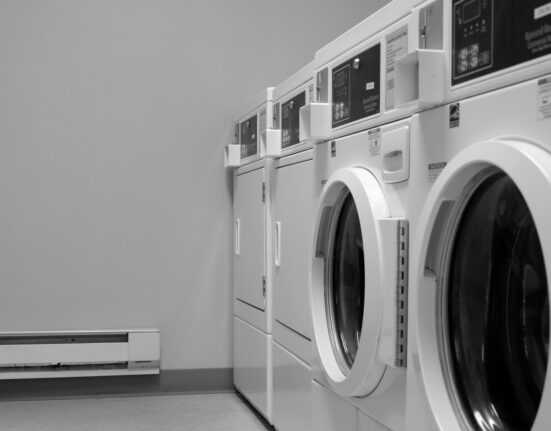When bullets fly, seconds matter. Across numerous sectors, professionals face genuine threats that require immediate, reliable protection. Ballistic barrier products have become indispensable safety equipment, transforming how organizations approach security and employee protection.
From financial institutions to educational facilities, the demand for protective barriers continues to grow as threats evolve and safety standards tighten. Organizations investing in ballistic security aren’t just purchasing equipment—they’re investing in lives, business continuity, and peace of mind.
This comprehensive overview examines six key industries where ballistic barriers serve as critical safety infrastructure, exploring specific applications, regulatory requirements, and the unique challenges each sector faces.
Financial Services and Banking
Banks and credit unions represent prime targets for armed robberies, making them early adopters of ballistic barrier technology. Modern financial institutions deploy multiple layers of protective barriers throughout their facilities.
Teller Protection Systems
Traditional bulletproof glass barriers at teller windows remain the most visible application of ballistic security in banking. These barriers typically feature:
- Level II or III protection rating (stopping handgun rounds)
- Deal trays for secure transaction processing
- Intercom systems for clear communication
- Curved or angled designs to prevent ricochet
ATM Security Solutions
Automated teller machines present unique vulnerabilities that require specialized protection:
- Reinforced ATM enclosures with ballistic-rated materials
- Protective canopies at drive-through locations
- Bulletproof glass surrounding standalone units
- Integrated surveillance systems within protected housings
Executive and VIP Areas
High-value targets within financial institutions often require additional protection through mobile barriers and reinforced office spaces that can be quickly secured during emergencies.
Law Enforcement and Correctional Facilities
Police departments, sheriff’s offices, and correctional institutions face daily exposure to armed individuals, making ballistic barriers essential for officer safety and facility security.
Police Station Security
Modern police facilities incorporate ballistic security from the ground up:
- Reception area barriers protecting civilian staff
- Interview room reinforcement for suspect questioning
- Evidence storage protection preventing tampering
- Command center hardening for critical operations
Correctional Institution Applications
Prisons and jails utilize extensive ballistic barrier systems throughout their facilities:
- Control room protection for monitoring staff
- Visiting area separation, ensuring visitor and staff safety
- Transport vehicle armoring for prisoner movement
- Perimeter checkpoint reinforcement
Mobile Patrol Protection
Law enforcement agencies increasingly deploy portable ballistic barriers for:
- Traffic stops in high-risk areas
- Crowd control during civil unrest
- Active shooter response scenarios
- Drug raid operations
Educational Institutions
School shootings have unfortunately made ballistic barriers a consideration for educational facilities from elementary schools through universities.
Administrative Office Protection
School administrative areas often serve as the first line of defense:
- Main office reception barriers
- Principal and counselor office reinforcement
- Nurse’s office protection for medical emergencies
- Security office hardening for campus safety personnel
Classroom Security Measures
Some districts have implemented classroom-level protection:
- Reinforced classroom doors with ballistic inserts
- Mobile barriers for lockdown procedures
- Safe room conversions in high-risk facilities
- Portable shields for emergency responders
Campus-Wide Security Infrastructure
Universities with larger security concerns may deploy:
- Campus police station fortification
- Residence hall front desk protection
- Student union building security checkpoints
- Athletic venue access control barriers
Government and Military Facilities
Federal, state, and local government buildings require robust ballistic security to protect personnel and maintain operational continuity.
Courthouse Security
Judicial facilities face unique threats requiring comprehensive protection:
- Courtroom barriers separating the public galleries
- Judge’s bench reinforcement and panic rooms
- Jury box protection during high-profile cases
- Security checkpoint fortification at building entrances
Military Base Protection
Military installations deploy extensive ballistic barrier systems:
- Entry control point reinforcement
- Command and control center hardening
- Barracks and housing area protection
- Vehicle checkpoint barriers stopping car-borne threats
Municipal Building Security
City halls, county offices, and other government facilities increasingly incorporate:
- Public counter barriers in permit offices
- Council chamber protection during meetings
- Emergency operations center hardening
- Parking garage and loading dock security
Healthcare and Medical Facilities
Hospitals and medical facilities face unique security challenges, from workplace violence to protecting high-value medications and equipment.
Emergency Department Protection
Hospital emergency departments often experience the highest security incidents:
- Triage area barriers protecting nursing staff
- Reception desk reinforcement for patient check-in
- Secure medication storage with ballistic protection
- Staff break room and administrative area hardening
Psychiatric Facility Security
Mental health facilities require specialized protective measures:
- Nursing station protection during patient interactions
- Therapy room reinforcement for one-on-one sessions
- Common area supervision booth security
- Secure transport vehicle modifications
Pharmacy and Laboratory Protection
High-value medical facilities need additional security layers:
- Pharmaceutical storage room reinforcement
- Laboratory equipment protection
- Research facility access control
- Medical record storage security
Transportation and Infrastructure
Airports, seaports, rail stations, and other transportation hubs represent critical infrastructure requiring comprehensive ballistic security.
Airport Security Applications
Aviation facilities deploy ballistic barriers throughout their operations:
- TSA checkpoint protection for screening personnel
- Air traffic control tower hardening
- Airport police station reinforcement
- Cargo handling facility security
Port and Maritime Security
Seaports face unique threats requiring specialized protection:
- Customs inspection booth hardening
- Port authority command center security
- Container inspection facility protection
- Maritime police patrol vessel armoring
Public Transit Protection
Bus and rail systems increasingly incorporate ballistic security:
- Transit police facility hardening
- Station master booth protection
- Control center reinforcement for system operations
- Mobile barriers for special events and high-threat periods
Building a Safer Tomorrow
Ballistic barrier products continue evolving alongside emerging threats and technological advances. Organizations across these critical industries recognize that proactive security investment protects more than physical assets—it safeguards the people who keep our society functioning.
Industry safety standards will likely become more stringent as threats diversify and public awareness grows. The most effective protective barrier implementations combine multiple security layers, regular training, and ongoing threat assessment to create comprehensive protection strategies.
For organizations evaluating ballistic security options, partnering with experienced manufacturers and security consultants ensures proper threat assessment, appropriate protection levels, and seamless integration with existing safety protocols.








Leave feedback about this